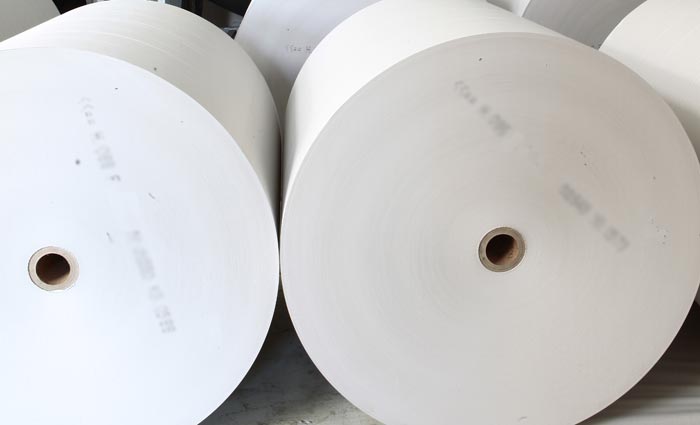
All major paper suppliers will raise prices at least 10 per cent from October as the Australian dollar continues to take a beating against the greenback.
Merchants and local branches of global suppliers are all under pressure from an Aussie dollar crashing from 87c late last year to 73c today, and from overseas mills dealing with higher costs.
BJ Ball is first off the block, with marketing manager Tony Bertrand confirming a 10 per cent price rise from October 1, mostly due to currency.
“We know it is a difficult time to raise prices and no one wants to do it, but we have little option at this point,” he says.
[Related: More paper news]
Spicers will hike prices by 11 per cent across the board from October 5. In a letter to customers, general manager Ken Booth says the company ‘has no option but to recover a portion of these incremental costs to our business’.
“Spicers is fully aware of the sensitivity of price in such a difficult trading environment and apologises for any hardship this increase may cause,” he says.
“Any efficiency gains or enhanced cost control savings will be passed through to the market wherever feasible.”
Direct Paper Supplies, one of the biggest merchants outside the big three, is also planning a 10 per cent rise from early October, with director Dale O’Neill calling it a ‘necessity’.
“We are being squeezed from the top and squeezed from the bottom so there is not much we can do about it. The dollar has moved so much and most mills deal in US dollars, plus some have raised prices,” he says.
KW Doggett is yet to confirm how much its prices will go out, but has indicated a similar move around the same time as everyone else. Managing director Simon Doggett says a decision will be made by Friday and he is trying to limit the impact.
"If we don't raise prices and make them stick we may as well close the doors as we are selling below cost on some products right now," he says.
Sappi Paper, which sells direct to big printers and supplies the merchants, is also upping its prices in Australia after sustained pressure from its European mills.
Australian managing director John Walker says the 10-12 per cent rise on coated woodfree sheets from sometime in October is driven both by currency and rising costs.
“We have only had one increase during the massive fall from parity to today’s price so we cannot afford to subsidise the market any longer,” he says.
“There is also strong demand on the mills in Europe for coated woodfree paper, which is pushing up prices independent of currency.”
Walker says the rise will only be 5-7 per cent on web paper as there is greater diversity of supply across Asia and Europe, making it a more competitive market.
“We will still be a ways behind the currency movements for all our products, but we don’t want to kill print. However, at the same time the mills have been patient as long as they can so we have been asked to raise prices quickly,” he says.
Norske Skog vice president Andrew McKean says there will be no further prices rises for LWC paper, used for magazines and catalogues, in Australia as it already increased them three per cent in July after raw material costs jumped 30 per cent in the past year.
[Related: Last round of price hikes]
Merchants are concerned about getting printers to go along with the price increases, with the past couple of hikes not fully implemented as a struggling industry resists further cost pressure.
Bertrand says February’s 6-8 per cent rise was not fully implemented despite the merchant hurting from the crashing dollar, and this round really needs to stick.
“Holding rises is a persistent problem. We will try, but market conditions in the print industry make it difficult,” he says.
Walker says the hikes simply have to be passed on, and the dollar has to get out of freefall, or the mills will stop seeing enough value in the market to keep up supply.
“Things are going to have to get better or the surety of supply Australia has enjoyed for many years will be in jeopardy,” he says.
“The mills se Australia as a strategic market, but we have to get the prices up or they will not see enough of a return to keep supply at current levels.”
Doggett echoes these concerns saying he is getting a strong impression from mills that Australia is 'not as exciting as it used to be'.
"If the industry doesn't learn to accept price rises then the mills will move tonnage to other markets. Mills have lowered capacity for years and they are starting to pick and choose where they send it," he says.
"Printers need to learn how to deal with price rises and pass them on to their customers."
O’Neill says there is a silver lining to the price hikes as with the US Dollar recovering, printers in Asia will have the same issues as their supply is also pegged to the greenback.
“The rise will affect China just as much, if not more so, making this a good opportunity for Australian printers to take work back from Asia,” he says.
The last round of paper price hikes in January-February saw Spicers go up 6-9 per cent, BJ Ball 6-8 per cent, KW Doggett eight per cent, and Norske Skog newsprint 3-5 per cent.
Comment below to have your say on this story.
If you have a news story or tip-off, get in touch at editorial@sprinter.com.au.
Sign up to the Sprinter newsletter
